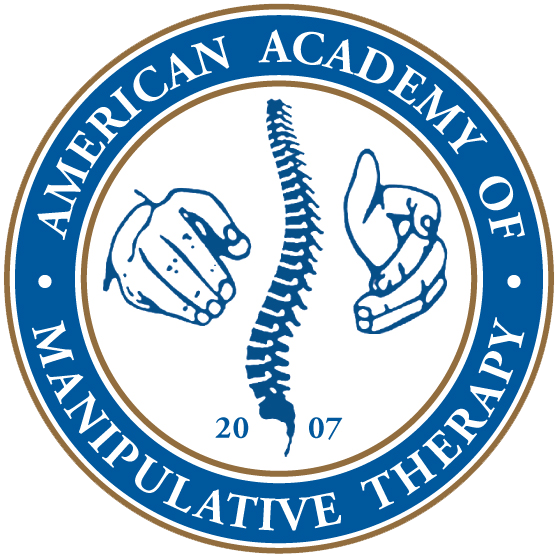Electrical Dry Needling: the Physiological Mechanisms in Osteoarthritis
Over the past decade, dry needling for the treatment of pain and disability in neuromusculoskeletal conditions has gained in popularity within the physical therapy profession. Specifically, many physical therapists have begun to incorporate dry needling into the conservative, multi-modal management of knee osteoarthritis with tremendous success. Osteoarthritis of the knee affects up to 37% of adults in the United States between 45 and 60 years of age.[1] The physiological changes in osteoarthritis have been well documented and are characterized by degeneration of articular cartilage with osteophyte formation and subchondral plate thickening.[2, 3] Yet, the pathogenesis and temporal relationship of subchondral bone damage, chronic inflammation of synovial tissue, and cartilage erosion is largely unknown, and there are currently no curative treatments for osteoarthritis.[4] However, pro-inflammatory cytokines have been implicated as a major causal factor of cartilage destruction and the inflammatory cascade, particularly involving Interleukin (IL)-1β and tumor necrosis factor alpha (TNF-α), among others.[2, 4]
Given that most occurrences of osteoarthritis are mechanically based (i.e. “wear and tear” related), it is ironic that manual therapy and exercise are useful in relieving pain and disability.[5] Movement stimulates synthetic chondrocyte activity and internal tissue remodeling, resulting in a reduction of proteoglycan synthesis and loss of cartilage.[6] As Burr et al reported, intramuscular stimulation of the quadriceps in immobilized rabbit knees resulted in a significant reduction of cartilage atrophy compared to controls.[7] However, therapeutic modalities that decrease the spatial summation of nociceptive input associated with low grade, C-fiber mediated chronic inflammation may also be useful in relieving pain. As Schaible suggested, reducing peripheral inflammation to stop and or reverse central mediated chronic changes may be key to effectively treating the pain associated with osteoarthritis.[8] In this regard, dry needling may be a powerful intervention for physical therapists to utilize in conjunction with exercise and manual therapy to additively treat osteoarthritis.
The mechanical stimulation from needling without injectate has been shown to cause the early release of substance P and calcitonin gene regulated peptide (CGRP) from both neural and non-neural cells, which may contribute to peripheral sensitization and inflammation.[9, 10] There are two primary theories for the early increase in substance P and CGRP following acupuncture (i.e. “needle puncture” or dry needling without injectate without the intent of moving qi along traditional Chinese acupuncture meridians). First, the additional neuropeptides provided by non-neurologic sources could provide negative feedback onto auto receptors located on nerve endings.[10] Second, the increase in substance P may function to regulate peripheral levels of CGRP.[11] The latter is particularly intriguing, given that CGRP has been shown to propagate inflammation in high quantities but provides potent anti-inflammatory actions in low concentrations via tetrodotoxin (TTX) channel inhibition.[11, 12]
The fact that CGRP promotes inflammation acutely is somewhat of a paradox, as the ability of CGRP to increase blood flow through vasodilation has been shown to contribute to tissue healing.[13] Moreover, a recent study demonstrated that acupuncture (i.e. dry needling without injectate!) is able to promote tendon healing via angiogenesis and fibroblast migration via CGRP release from sensory nerve endings and mechanical stimulation of collagen fibers, respectively.[14, 15] In short, CGRP causes vasodilation by binding to CGRP1 receptors on vascular smooth muscle, resulting in the increase of phosphokinase-α (PKA). The subsequent opening of K+ channels and reduction of Ca2+ results in smooth muscle relaxation and vasodilation.[13] The increase in PKA also stimulates nitric oxide synthase, an enzyme responsible for producing nitric oxide, thereby enhancing the response.[13] Zhang et al further hypothesized that acupuncture may directly stimulate the sympathetic nervous system to release nitric oxide by creating an “axon reflex” within densely innervated tissue.[10]
The role of CGRP in osteoarthritis is particularly counterintuitive, as the pain associated with osteoarthritis has been linked to an upregulation of vascular and neural tissue (with CGRP and substance P) in the vicinity of joint structures that are typically aneural.[16] CGRP expression has been shown to increase in animals injected with monosodium iodoacetate, a model of osteoarthritis pain;[17] however, the effects of acupuncture for osteoarthritis have also been shown to increase blood flow. While the effects of acupuncture on osteoarthritis have yet to be fully realized, a previous study demonstrated an equivalent positive outcome of needling at acupoint and non-acupoint locations around the hip joint.[18] This finding suggests that acupuncture may also provide a nonspecific effect in patients with osteoarthritis. Furthermore, many researchers articulate that the general effect of acupuncture for patients with osteoarthritis is due to increased blood flow to the peri and intra-articular tissues. For example, following acupuncture, Lazaro et al measured a significant increase in vasodilation over the medial aspect of the knee.[19] Since the vasodilation disappeared upon application of L-NAME, a nitric oxide synthase inhibitor, the resulting change in vasodilation was likely due to an increase in nitric oxide. Whether CGRP also plays a role has yet to be determined, but given the numerous studies that report an increase of CGRP post-acupuncture and the potential for CGRP to mediate nitric oxide release from endothelial cells,[12, 13] it is also a likely player in the vasodilation. Importantly, the vasodilation was also inhibited by blocking neuromuscular junctions with succinylcholine, a nicotinic ACh receptor blocker, suggesting that muscle contraction via electroacupuncture may be required for CGRP and nitric oxide mediated vasodilation.[19]
The increased blood flow likely has three primary effects on joints with osteoarthritis. First, while the role of microvascular restriction is unclear, a recent study by Hussain et al found that patients with retinal arteriole narrowing were twice as likely to develop knee osteoarthritis and require a knee replacement.[20] This finding suggests that reduced microcirculation of the knee is likely a factor in the development of osteoarthritis, to include the muscles that surround the joint.[20, 21] Similarly, Biberthaler et al found reduced microcirculation in degenerative rotator cuff lesions.[22] That is, electroacupuncture (i.e. electrical dry needling!) may improve vascularity of the joint via CGRP and nitric oxide, thereby inhibiting and/or reversing symptoms associated with osteoarthritis. Second, a number of studies have shown a significant reduction in inflammatory cytokines in the synovial fluid of osteoarthritic joints following acupuncture. The increased blood flow likely facilitates the recruitment of opioid producing immune cells required to reduce the level of inflammatory cytokines. Ahsin et al reported a significant increase in plasma β-endorphin levels after electroacupuncture to local points at the knee that correlated with reductions in pain, stiffness and disability, which is likely due to vasodilation.[23] Electroacupuncture further blocks the local release of IL-1 β and TNF-α in the synovia of osteoarthritic joints[24] and the systemic release of IL-1 β and TNF-α by inhibiting melanocortin-4 in the periaqueductal gray of the brain stem.[25] Third, there is limited evidence suggesting acupuncture may stimulate an increase in hyaluronic acid, allowing the synovial fluid to better lubricate the joint.[26] Therefore, acupuncture (i.e. dry needling without injectate, but not for the purpose of moving qi along one traditional Chinese acupuncture meridians) may be a viable and cost effective treatment for knee osteoarthritis, especially when combined with traditional physical therapy interventions such as exercise and non-thrust joint mobilization.
AUTHORS
Benjamin Thomas, PT, OCS, Cert. DN
Charlie Norwood VA Medical Center, Augusta, GA
Fellow-in-Training, AAMT Fellowship in Orthopaedic Manual Physical Therapy
Raymond Butts, PhD, DPT, MSc (NeuroSci), Cert. DN, Cert. SMT
Senior Instructor, Spinal Manipulation Institute & Dry Needling Institute
Senior Faculty, AAMT Fellowship in Orthopaedic Manual Physical Therapy
REFERENCES
- Zhang, Y. and J.M. Jordan, Epidemiology of osteoarthritis. Clin Geriatr Med, 2010. 26(3): p. 355-69.
- Martel-Pelletier, J., Pathophysiology of osteoarthritis. Osteoarthritis Cartilage, 1999. 7(4): p. 371-3.
- Carter, D.R., et al., The mechanobiology of articular cartilage development and degeneration. Clin Orthop Relat Res, 2004(427 Suppl): p. S69-77.
- Kapoor, M., et al., Role of proinflammatory cytokines in the pathophysiology of osteoarthritis. Nat Rev Rheumatol, 2011. 7(1): p. 33-42.
- Zhang, W., et al., OARSI recommendations for the management of hip and knee osteoarthritis, Part II: OARSI evidence-based, expert consensus guidelines. Osteoarthritis Cartilage, 2008. 16(2): p. 137-62.
- Huber, M., S. Trattnig, and F. Lintner, Anatomy, biochemistry, and physiology of articular cartilage. Invest Radiol, 2000. 35(10): p. 573-80.
- Burr, D.B., et al., Intracast muscle stimulation prevents bone and cartilage deterioration in cast-immobilized rabbits. Clin Orthop Relat Res, 1984(189): p. 264-78.
- Schaible, H.G., A. Ebersberger, and G.S. Von Banchet, Mechanisms of pain in arthritis. Ann N Y Acad Sci, 2002. 966: p. 343-54.
- Erin, N. and O. Ulusoy, Differentiation of neuronal from non-neuronal Substance P. Regul Pept, 2009. 152(1-3): p. 108-13.
- Zhang, Z.J., X.M. Wang, and G.M. McAlonan, Neural acupuncture unit: a new concept for interpreting effects and mechanisms of acupuncture. Evid Based Complement Alternat Med, 2012. 2012: p. 429412.
- Bullock, C.M. and S. Kelly, Calcitonin gene-related peptide receptor antagonists: beyond migraine pain–a possible analgesic strategy for osteoarthritis? Curr Pain Headache Rep, 2013. 17(11): p. 375.
- Zijlstra, F.J., et al., Anti-inflammatory actions of acupuncture. Mediators Inflamm, 2003. 12(2): p. 59-69.
- Lundeberg, T., Acupuncture mechanisms in tissue healing: contribution of NO and CGRP. Acupunct Med, 2013. 31(1): p. 7-8.
- Zhang, B.M., et al., Acupuncture for chronic Achilles tendnopathy: a randomized controlled study. Chin J Integr Med, 2013. 19(12): p. 900-4.
- Neal, B.S. and J. Longbottom, Is there a role for acupuncture in the treatment of tendinopathy? Acupunct Med, 2012. 30(4): p. 346-9.
- Hunter, D.J., J.J. McDougall, and F.J. Keefe, The symptoms of osteoarthritis and the genesis of pain. Med Clin North Am, 2009. 93(1): p. 83-100, xi.
- Bullock, C.M., et al., Peripheral calcitonin gene-related peptide receptor activation and mechanical sensitization of the joint in rat models of osteoarthritis pain. Arthritis Rheumatol, 2014. 66(8): p. 2188-200.
- Fink, M.G., et al., Non-specific effects of traditional Chinese acupuncture in osteoarthritis of the hip. Complement Ther Med, 2001. 9(2): p. 82-9.
- Loaiza, L.A., et al., Electro-acupuncture stimulation to muscle afferents in anesthetized rats modulates the blood flow to the knee joint through autonomic reflexes and nitric oxide. Auton Neurosci, 2002. 97(2): p. 103-9.
- Hussain, S.M., et al., Retinal arteriolar narrowing and incidence of knee replacement for osteoarthritis: a prospective cohort study. Osteoarthritis Cartilage, 2015. 23(4): p. 589-93.
- Findlay, D.M., Vascular pathology and osteoarthritis. Rheumatology (Oxford), 2007. 46(12): p. 1763-8.
- Biberthaler, P., et al., Microcirculation associated with degenerative rotator cuff lesions. In vivo assessment with orthogonal polarization spectral imaging during arthroscopy of the shoulder. J Bone Joint Surg Am, 2003. 85-A(3): p. 475-80.
- Ahsin, S., et al., Clinical and endocrinological changes after electro-acupuncture treatment in patients with osteoarthritis of the knee. Pain, 2009. 147(1-3): p. 60-6.
- Huang, J., et al., [Effects of electroacupuncture on synovia IL-1beta and TNF-alpha contents in the rabbit with knee osteoarthritis]. Zhen Ci Yan Jiu, 2007. 32(2): p. 115-8.
- Zhang, R., et al., Mechanisms of acupuncture-electroacupuncture on persistent pain. Anesthesiology, 2014. 120(2): p. 482-503.
- Li, A., et al., Electroacupuncture suppresses hyperalgesia and spinal Fos expression by activating the descending inhibitory system. Brain Res, 2007. 1186: p. 171-9.




